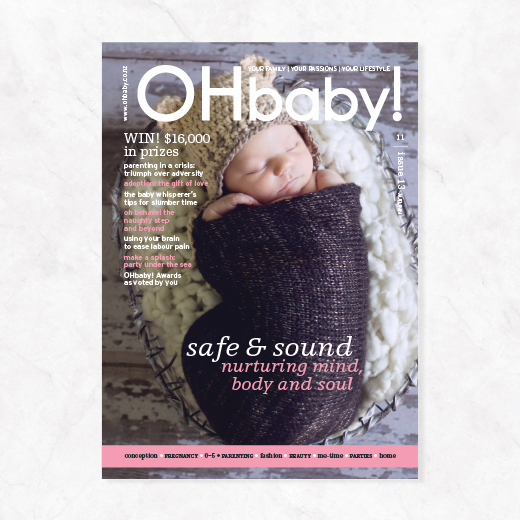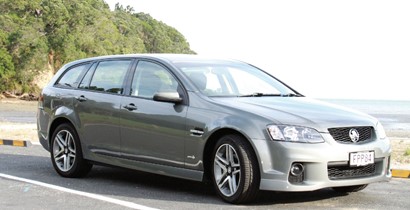Why walking is the perfect exercise for a new mama

Celebrities seem to drop their baby weight before they've even left the maternity ward. In the real world, walking is an achievable way to get back in shape post-baby, suggest our fitness experts Fiona Ross and Lisa Yates.
How many TV reality shows or magazines portray famous new mothers who have been on some fast weight-loss and strict exercise regime successfully trimming right down to a size six less than two months after their baby has been born? This sort of publicity not only leaves most new mothers feeling totally inadequate, it may even encourage new mums to make the wrong choices during the important postnatal months.
Remember that it takes nine months to grow a baby, and it can take up to nine months, or even more, to get everything back in its place, so to speak! The postnatal period is a wonderful time to really focus on bonding with your new baby and to nurture yourself - so be gentle on your mind and body during this precious time.
Try W . A . L . K . I . N . G .
W: Weather permitting, you can go any time and anywhere. With appropriate clothing and a buggy cover, even the weather shouldn't hold you up. You don't need a babysitter, and most babies like the movement, often falling asleep while you are out and about. The weight of the buggy adds its own challenge, especially uphill. Walk to the shops, a friend's house for coffee, to kindy to pick up your toddler, to the post office or even just around the neighbourhood.
A: Attitude lifts instantly with exercise. Those "feel good" endorphins, combined with the fresh air and freedom of being outside, can make you feel much more able to cope with the challenges of motherhood. Exercise helps brain function, improving clarity of mind and emotional and spiritual wellbeing.
L: Listen to a friend. Walking provides a great opportunity to catch up with someone. By walking with another new mother and sharing your concerns and triumphs, you'll find that you can support, encourage and motivate each other on this new journey together.
K: Know when to say no! If you have been up all night feeding or settling baby, or you or your little one is feeling under the weather, decide on a day at home to restore and recover. Rest is important, and a balance of exercise + nutrition + attitude + rest = a happy mother.
I: Increased energy, improved stamina and confidence. Losing abdominal fat and controlling your weight suddenly sounds quite appealing, post-pregnancy. Participating in some sort of exercise also improves the quality of your sleep. While you may be getting up through the night to feed your baby, it is important that you get plenty of sleep and rest. Sleep deprivation may increase hunger and you are more likely to resort to comfort food.
N: Notice the green grass and beautiful flowers. Smell the ocean and hear the birds as you meditate in motion. Do everything with a purpose.
G: Goals are vital for achieving success. No one accidentally gets fit - it takes planning. While you walk, use the time to clarify your fitness goals. Everything seems clearer when outdoors. Now you know that walking can help improve all aspects of wellbeing, walk instead of taking the lift or escalator, or park further away from your destination and walk the extra 10 minutes of your journey. Even regular "incidental" exercise like this will contribute to your daily calorie expenditure and your overall sense of well-being.
Step by step
Depending on your pre-pregnancy fitness level, in the first few weeks after the birth of your baby, you may begin with just a gentle walk around the block. While a short stroll should be fine in the early weeks, it is generally recommended that you wait until after your postnatal check-up (at around six weeks) before starting any formal exercise programme.
Begin slowly and ensure you experience only mild shortness of breath. You should still be able to hold a conversation while walking. Exercise should be fun so take the time to enjoy what you are doing and don't make it a chore. If you are new to an exercise routine, the table below provides guidelines on how long to exercise and how to increase activity. Remember this is just a guide and some days you may feel like doing more and other days it may seem like you have gone back to the start. Learn to listen to your body - your best walking guide.
Gradually increase the intensity and duration when you are ready, and don't hesitate to seek advice if you experience any pain or discomfort.
Ensure you are drinking adequate fluids to maintain good hydration. This is even more important if breastfeeding, or during warmer weather.
Remember to wear comfortable clothing and appropriate, supportive footwear. A supportive bra is a must to protect delicate breast tissue, especially if you are breastfeeding. Try wearing two bras or a sports crop top over your bra for extra support. A well-fitting bra will also help to decrease shoulder and upper-back strain, and is less likely to cause problems such as blocked ducts. If chaffing is an issue, there are lots of options available from your pharmacy to minimise any discomfort.
Ideally, combine walking with a very gentle exercise programme designed to strengthen your pelvic floor and core musculature. This will give you the maximum benefit, enabling you to return to your sport or gym classes with less risk of any injuries.
If you enjoyed running before your baby was born, don't be tempted to run again until at least four to five months after giving birth, providing your pelvic floor muscles feel as if they have returned to full strength. Before even considering running, it is vital that you have no symptoms of leaking or "heaviness" below, or any discomfort in the pelvic region. High-impact exercises, such as jogging, can make a weak pelvic floor even weaker, leading to possible incontinence or even prolapse of the pelvic organs. See your women's health physiotherapist if you are unsure or if your symptoms persist.
Regular aerobic exercise is vitally important to improve heart and lung fitness, and will help with losing extra post-baby weight.
Total wellbeing
So, you have decided to go walking to help with your aerobic fitness and lose that extra baby weight. You are doing your pelvic floor and core exercises to build those foundations back up again. You feel you are coping well with motherhood (most days) and the quality of your sleep has improved (apart from those lovely night-time feeds!) One last vital ingredient (or, excuse the pun, the icing on the cake) is nutrition.
Ensure you are following the basic guidelines to meet nutritional requirements for a healthy diet. Eat a variety of foods from each of the four major food groups. Prepare meals with minimal added fat (especially saturated fat) and salt. Choose pre-prepared foods, drinks, and snacks that are low in fat and salt. Drink plenty of fluids each day(minimising drinks high in sugar or caffeine). If drinking alcohol, do so in moderation.
A simple stroll but remember…
Always work at your own pace and slowly increase as you are ready. Remember, the first three months postnatally are vital to recovery. Returning too early to running or high-impact activities could contribute to life-long problems.
If you haven't managed to get out walking, or your healthy eating plan has fallen by the wayside, don't beat yourself up. No one is perfect. Just start the next day as you mean to go on. Everyone (especially new mothers) has days when plans take a slight detour. Never give up!
Being fit and feeling good about yourself will make the experience of motherhood all the more enjoyable.
Just remember that the first step towards getting somewhere is to decide that you are not going to stay where you are. Well done for taking that step.
YOUR GUIDE TO POSTNATAL WALKING - STARTING SIX WEEKS AFTER YOUR BABY IS BORN
| Fitness level | Week 1 | Week 2 | Week 3 | Week 4 | Week 5 | Week 6 | Try this |
| Beginner | 10-15 min | 12-18 min | 14-19 min | 15-20 min | 17-22 min | 18-25 min | Increase intensity as able |
| Intermediate | 15-20 min | 16-22 min | 18-24 min | 19-25 min | 22-28 min | 24-30 min | Bring in some hills/steps |
| Regular exerciser | 20-25 min | 25-30 min | 30-35 min | 35-40 min | 40-45 min | 45 min (hilly) | 1 min fast/1 min slow |
Fiona Ross is a mother of two teenagers, an ex-midwife and now works as a personal trainer. Lisa Yates, the mother of two young girls, is an experienced physiotherapist with a special interest in women's health.

AS FEATURED IN ISSUE 13 OF OHbaby! MAGAZINE. CHECK OUT OTHER ARTICLES IN THIS ISSUE BELOW














